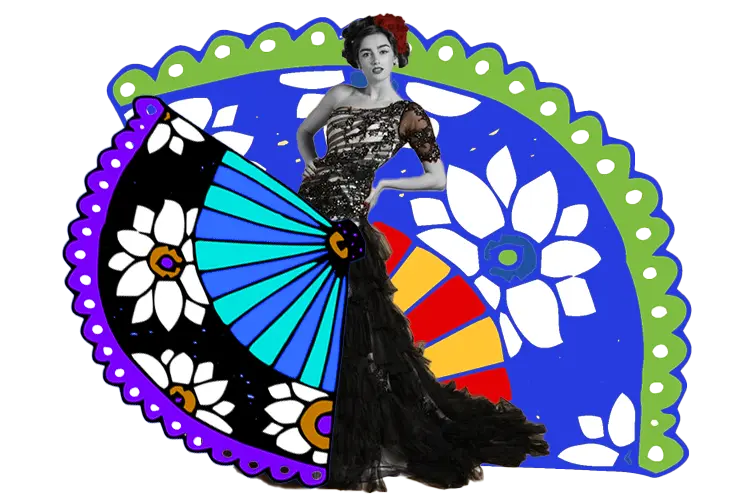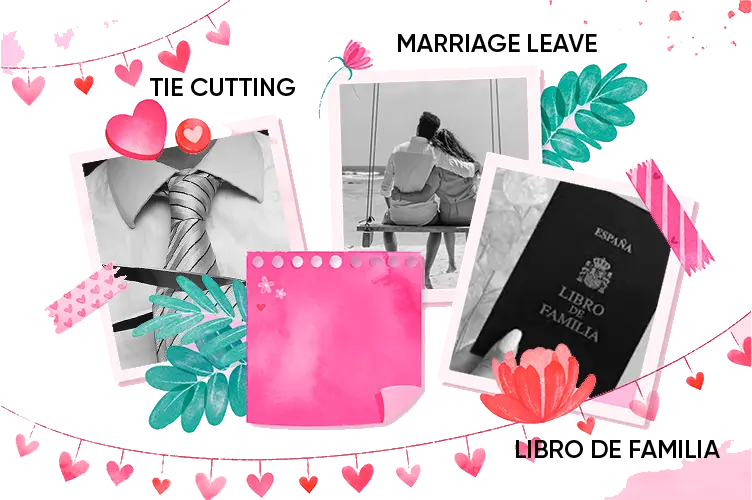
Spain, rich in history, culture, and vibrant celebrations, offers a tapestry of customs that make its weddings extraordinary. From the traditional rituals passed down through generations to the regional influences that add unique flavors to each celebration, Spanish weddings are a captivating blend of romance, symbolism, and joyful festivity.
Whether you are planning a Spanish-inspired wedding, have attended one, or are captivated by the rich cultural tapestry of Spain, this blog will guide you through the Spanish wedding traditions that make them an unforgettable experience.
It’s common for Spanish brides to wear their engagement ring on the left ring finger, and when married, wear their wedding ring on their right ring finger (as opposed to both on the left hand as is in many Western cultures).
A traditional Spanish wedding ceremony typically follows Catholic traditions. Therefore, many couples choose to get married in a church.
During the ceremony, the flower girl is the first to walk down the aisle with a trail of rose petals. Next, the groom is walked to the altar by his mother, and the bride is accompanied by her father. Walking down the aisle is traditionally when the bride and groom see one another for the first time.

Las Arras is a Spanish wedding tradition involving the bride and groom exchanging thirteen coins during the wedding ceremony. The groom presents thirteen gold or silver coins to the bride, typically blessed by a priest or officiant during the ceremony. The number thirteen is symbolic and represents Jesus Christ and his twelve apostles.
After the ceremony, the couple keeps the arras as a cherished memento of their wedding day. The coins may be kept in a special box or displayed in their home as a reminder of their commitment to one another and shared financial future.
As the couple exits the church (or another ceremony venue), guests throw rice over them. This act symbolizes fertility and good luck for the newlyweds. Pictures are also often taken at the church with the couple before heading to the reception.
The reception is a festive affair filled with food, drinks, music, and dancing. Spanish weddings are known for their lively atmosphere; guests participate in a traditional wedding dance like the flamenco or regional folk dances.
Unlike in Western culture, there doesn’t tend to be a wedding party with bridesmaids and groomsmen. Instead, they have padrinos, whose role is to give advice, support the couple and act as witnesses to the marriage. While the couple can choose their padrinos, traditionally, they would be the bride’s father and the groom’s mother. At the reception, there is typically a head table of 6 people, the married couple and their parents.

Orange blossoms are the traditional Spanish wedding flower as they are believed to bring luck and blessings for a fruitful marriage. The orange blossom represents fertility and abundance, and the fragrant white flowers are often seen as a symbol of purity, innocence, and the beginning of a fruitful union. Orange blossoms are often used as decorations, incorporated into flower arrangements, and in the bride’s bouquet.
The newlyweds cut the cake together as a symbol of their commitment to work together; however, what makes this Spanish tradition unique is that it’s done with a ceremonial sword.
In Spain, it is common for the wedding celebration to continue long into the night. After the formalities of the reception, guests engage in a leisurely post-meal conversation and bonding called sobremesa, which can last for hours.

Traditionally, Spanish brides would wear a black wedding dress. In contrast to the symbol of purity associated with the white wedding dress in Western culture, the black dress symbolizes the commitment a Spanish bride makes to their partner. Some see the black wedding dress as a physical representation of the traditional “till death do us part” vow. That being said, due to Westernization, more and more Spanish brides are opting for a white dress.
Orange blossoms are also often incorporated into the bride’s outfit for the wedding. It’s common for brides to wear elaborate hairpieces or combs adorned with orange blossoms. These hair accessories, known as azahar, are often handed down through generations and symbolize family traditions, purity, and good luck.
If you’re attending a Spanish wedding as a guest and are still deciding what to wear, look at the dress code outlined on the invitation. The couple getting married will likely outline a dress code (formal versus semi-formal) that will help you decide what to wear. Consider the time of the wedding, as an evening wedding will likely indicate a more formal dress code.
So, what should you wear? Spanish catholic weddings tend to be pretty formal, so you will want to wear a dress (or skirt) or suit with a tie.
Even though the bride may be wearing a black dress, it’s still advised not to wear white to a wedding.
One last thought about attending a Spanish wedding and what to wear as a guest. The party might go on all night, so you want comfortable shoes. Hence, you’re ready to engage in all the Spanish wedding traditions, especially the dancing.

Tie-cutting is a lighthearted and playful tradition often during the wedding reception. It involves the groom’s tie being cut into small pieces and then sold to the guests. It’s done to raise money for the couple’s honeymoon or to help cover the wedding expenses. It is a fun way for guests to contribute and support the newlyweds.
In Spain, a newly married couple gets 15 days of marriage leave to celebrate their honeymoon. This is a tradition that should be adopted in North America.
The Libro de Familia is a document used in Spain and other Spanish-speaking countries to record and establish the legal family relationship between its members. It serves as an official record of the family unit and contains information about marriage and children.
The Libro de Familia is typically obtained after registering a civil marriage at the corresponding Civil Registry. If the couple has children, their birth details are also in the book. It is common for the Civil Registry to issue the Libro de Familia to the spouses or parents once they have registered their marriage and/or the births of their children.
The Libro de Familia is a critical document and serves as legal proof of family ties. It includes information such as the full names of the spouses, dates, places of birth, marriage date, and details of the children, including their names and dates of birth.
The specific format and requirements of the Libro de Familia may vary slightly between different regions and countries where it is used.
Spanish wedding traditions remind us that weddings are not just about two individuals joining in matrimony; they celebrate heritage, a continuation of cultural legacies, and a testament to the bonds that tie us together.
Traditionally, the married couple gifts their wedding guests a small token of appreciation for their attendance. Examples of these wedding favors include cigars and decorative fans.
Spanish weddings are known for continuing all night. The dinner can last 2 to 3 hours with multiple courses, and the dancing can stay all night.
Traditionally, there aren’t any speeches. Of course, as you can see, there are many other traditions (and the reception is focused on food and dancing).
Generally, there are no wedding parties at a traditional Spanish weddings – no bridesmaids and no groomsmen. This means that the couple stands at the altar on their own during the ceremony and that at the ‘head table’ during the reception, the couple sits with their parents.
Spanish couples are generally supported by their parents, who play a significant role in planning and paying for the wedding. Traditionally, the bride’s parents pay for the wedding. While the groom’s parents pay for the alcohol, expenses for the legal ceremony, the rings, and the honeymoon.
Want to learn about other culturally-driven weddings from Scotland, Nigeria, or Norway–read all about them! At the Groom Club, we help grooms up their game at every stage of the wedding process, from the proposal to the honeymoon. We’ve got the tips and tricks!
Make the Groom Club your go-to spot for all the latest on how to make your wedding unique and memorable. Discover all our latest articles today and subscribe to our newsletter for more TGC content.